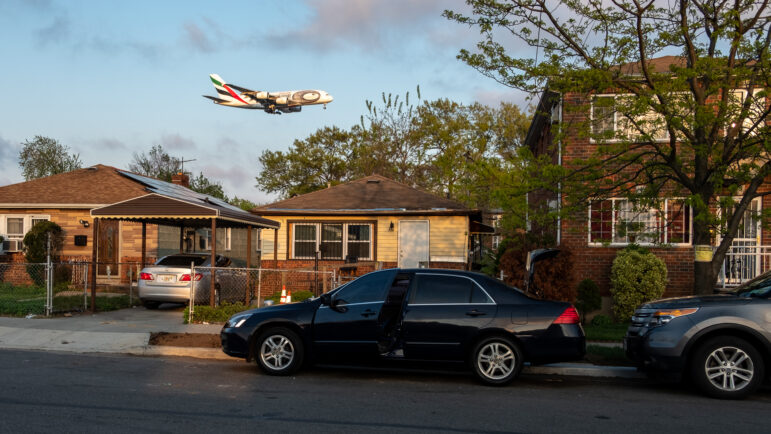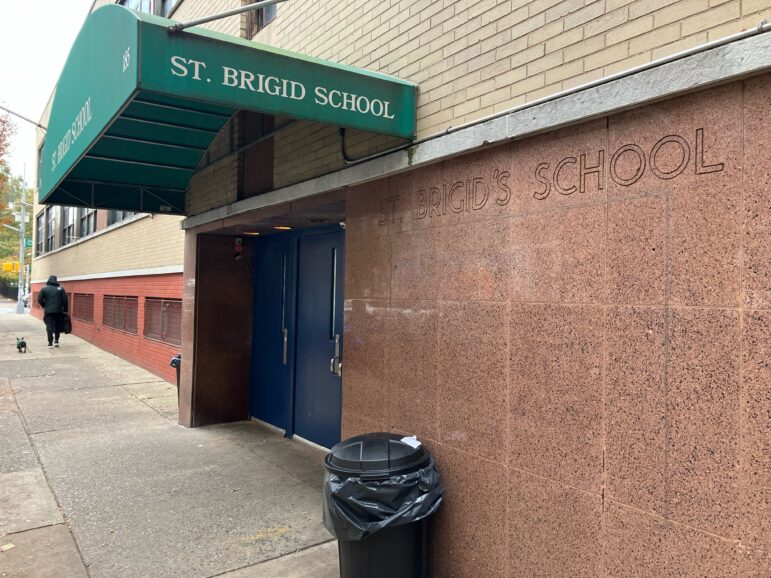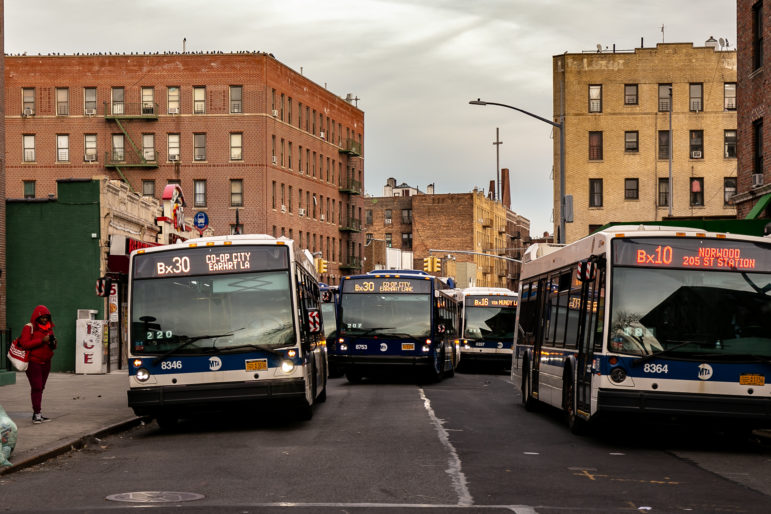More than half of CUNY’s buildings are 50 years old or older. That’s a problem for the environment: older buildings tend to consume larger quantities of energy, generating more of the greenhouse gasses that lead to climate change.
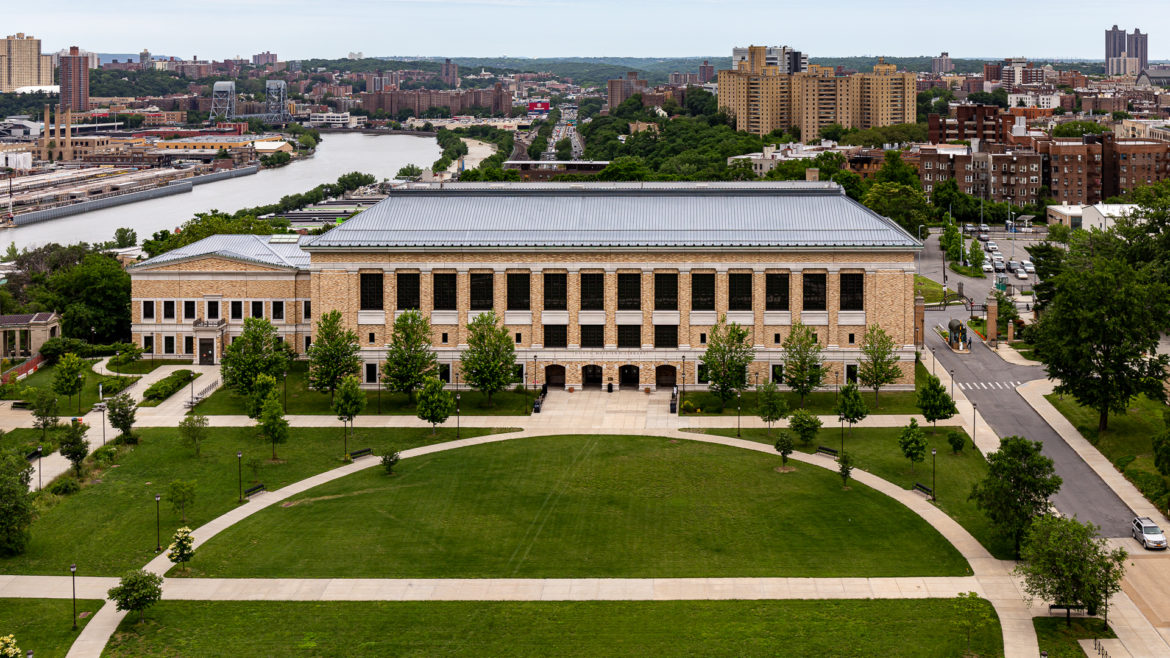
Adi Talwar
The Bronx Community College campus. CUNY has some 300 buildings across the city.What do the decaying buildings at the City University of New York (CUNY) have to do with climate change? A lot.
More than half of CUNY’s buildings are 50 years old or older. That’s a problem for the environment: older buildings tend to consume larger quantities of energy, generating more of the greenhouse gasses that lead to climate change.
Meanwhile, the administration is racing to meet an ambitious climate mandate that requires city-owned buildings to reduce their carbon emissions 50 percent by 2030. And as the city has over 300 CUNY buildings across 29 million square feet under its care, environmentalists say the decarbonization of this massive footprint must take precedence.
“CUNY is arguably the single biggest piece of the puzzle that New York City has to address in order to reach its climate goals. But it hasn’t really yet gotten the attention that it needs,” said Eli Dvorkin, a researcher at the Center for an Urban Future who co-authored a report on the state of CUNY’s facilities.
Tackling CUNY’s carbon footprint, Dvorkin says, will solve two big problems plaguing the public university: climate change and the need to revive its aging campuses.
By renovating buildings to make them more energy efficient and resilient, the administration can simultaneously tackle a mounting repairs backlog. Only about 8 percent of CUNY buildings are in a state of good repair, according to the university.
While CUNY’s sustainability program is making progress on these fronts, advocates say it will fail to reach its climate goals without more resources. “A big part of the challenge is that the city and state have chronically underfunded CUNY capital needs for decades,” Dvorkin said.
Since January 2022, CUNY faces a cumulative $95 million in recurring annual cuts under Mayor Eric Adams’ Programs to Eliminate the Gap (PEGs).
Over the past five years, CUNY has received $2.9 billion from the state and $500 million from the city to renovate and upgrade its facilities, Dvorkin’s report says. But CUNY’s capital plan says the university system will need $6.8 billion over the next five years to fully address its maintenance backlog and upgrade its aging properties.
Tackling the billion dollar backlog
Some lawmakers are pushing to funnel more funds towards CUNY’s maintenance problems, and say that factoring in climate change is an important part of the equation.
“Any construction we do should be looked at through the lens of climate change and should be energy efficient,” said Councilmember Eric Dinowitz, who chairs the Council’s Committee on Higher Education and hosted a hearing last month on the state of CUNY’s facilities.
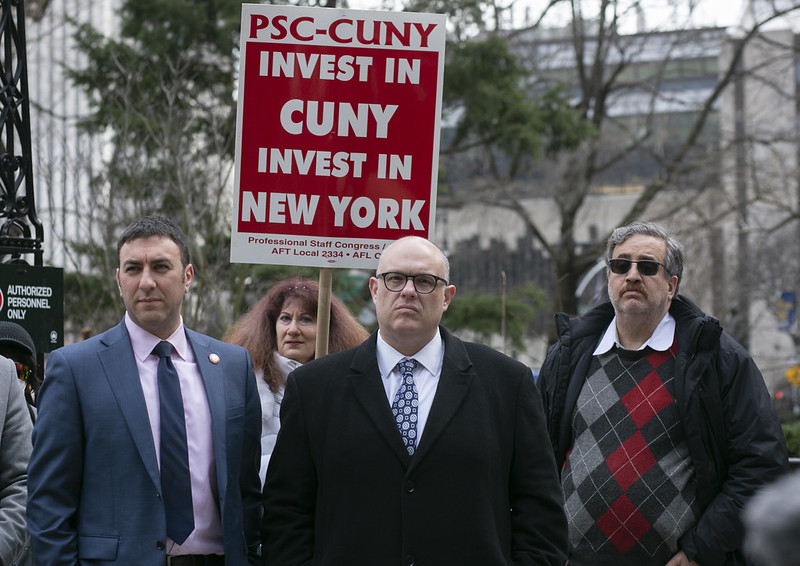
William Alatriste/NYC Council Media Unit
Dinowitz, at left, with other councilmembers at a 2022 rally calling for greater investment in CUNY.In their budget response, Dinowitz and his colleagues are calling for over $333 million in capital funding from the Adams administration “to support CUNY in preserving the university system’s infrastructure, recapturing spaces that are under-utilized, improving technology, and meeting energy conservation goals.”
At the April 17 hearing, students and faculty testified that the state of CUNY’s buildings have gotten worse. In some classrooms, the ceiling is falling apart and black mold has taken over. Jean Grassman, an associate professor at CUNY’s Graduate School of Public Health & Health Policy, testified that heating pipes at Colston Hall in Bronx Community College froze in 2019 and flooded dozens of offices and classrooms, “forcing relocation for six weeks.”
CUNY estimates that it currently faces a $4.3 billion backlog in deferred maintenance costs across its 25 schools.
“The sorry state of its campus is doing a disservice to its largely low income student body,” said John Surico, who spoke at the hearing and co-authored the Center for an Urban Future’s report.*
“CUNY is one of the best public institutions for economic mobility that the city has. It’s this incredible engine to get folks into middle or upper class jobs,” he added. “So we have a unique opportunity here to not only fix these buildings and build a better future for CUNY students, but also really chip away at the city’s mission to lower its carbon emissions.”
The university has been hard at work on decarbonization with the existing resources it does have. Last year, CUNY outlined a roadmap in its five-year capital plan for how it intends to reach the carbon emissions targets stipulated by city-wide mandates, and reduce its energy consumption to meet state targets.
Measures include upgrading LED lighting and optimizing other equipment across the system so it uses up less energy. CUNY has also been deploying submeters to collect data on the building energy performance to plan for upgrades when needed.
Large-scale public solar projects were also established at both the Borough of Manhattan and Bronx Community Colleges (the latter of which is also getting upgraded boiler and chiller systems thanks to support from the New York Power Authority, or NYPA).
There is also more collaboration with NYPA on the horizon. The agency was authorized at the end of last year to develop “decarbonization action plans” for 15 of the state’s highest emitting facilities, which includes three CUNY campuses.
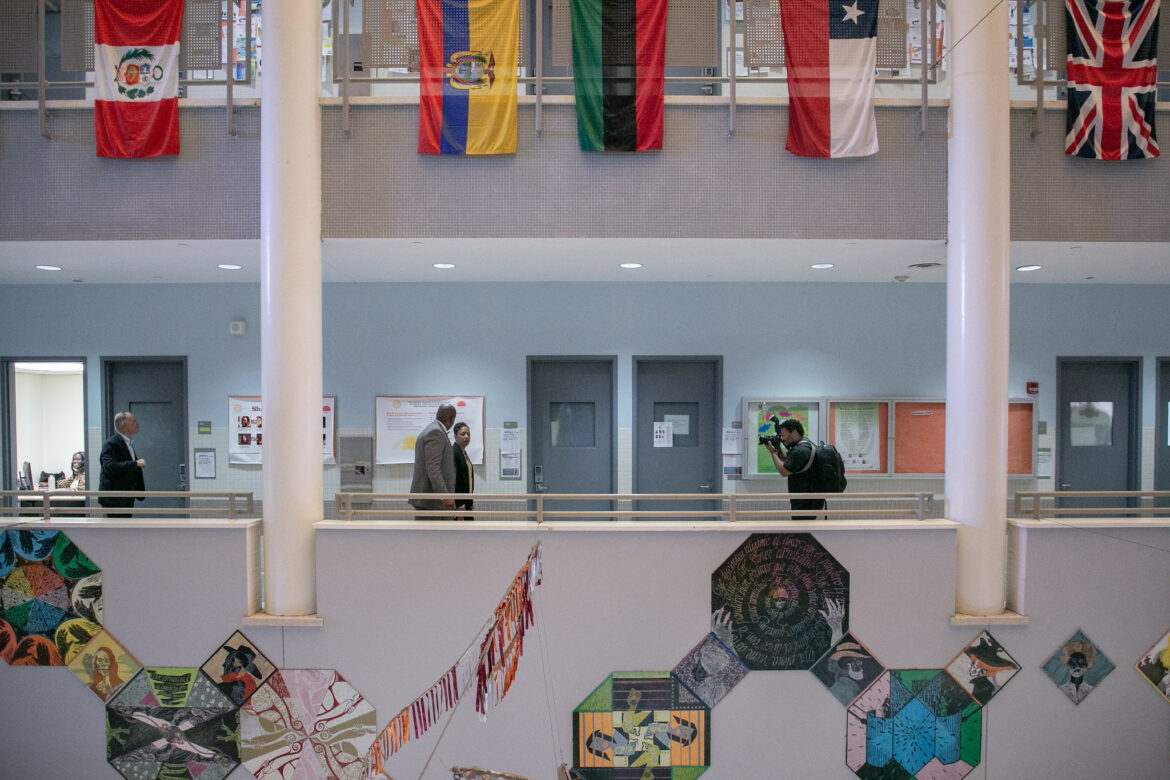
William Alatriste/NYC Council Media Unit
A building at CUNY’s Hostos Community College in the Bronx.Between 2006 and 2023, CUNY as a whole has reduced its emissions by 11 percent, according to the university.
But that progress is too slow, advocates and staff say. “We haven’t been able to implement the changes that are needed. And that’s partly an administrative problem. We just haven’t had enough administrative infrastructure to do it,” said Nancy Romer, climate director at the union Professional Staff Congress (PSC-CUNY).
While Romer says the Sustainable CUNY team, which oversees environmental efforts, is doing the best it can with the little resources it has, she claims bureaucratic hurdles, low salaries and short staff make it hard to accomplish more.
“CUNY is proud of its work to reduce our carbon footprint, creating greener buildings and campuses. Like any large public institution, we face challenges upgrading our buildings but are committed to continuing to address climate change,” a CUNY spokesperson said in an email.
Significantly reducing CUNY’s carbon footprint will ultimately come down to political willpower and commitment from City Hall, environmentalists say.
“There’s a lot of talk of decarbonisation, a lot of talk of meeting climate mandates, but their investments need to match that talk,” said Jennille Scott, climate director at the Alliance for a Greater New York (ALIGN). “They need to match the depth of the climate crisis and the impacts that are being felt across CUNY campuses.”
To reach the reporter behind this story, contact Mariana@citylimits.org. To reach the editor, contact Jeanmarie@citylimits.org
Want to republish this story? Find City Limits’ reprint policy here.
*An earlier version of this story incorrectly identified Surico as a CUNY professor. He teaches at NYU, not CUNY. City Limits regrets the error.


